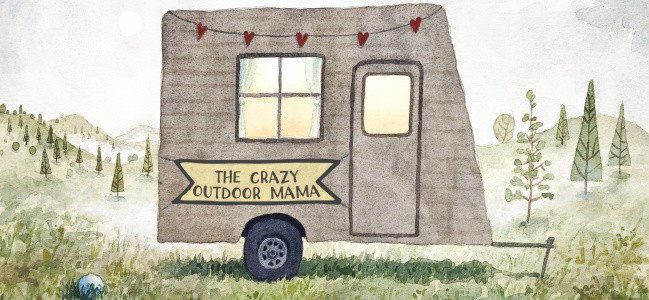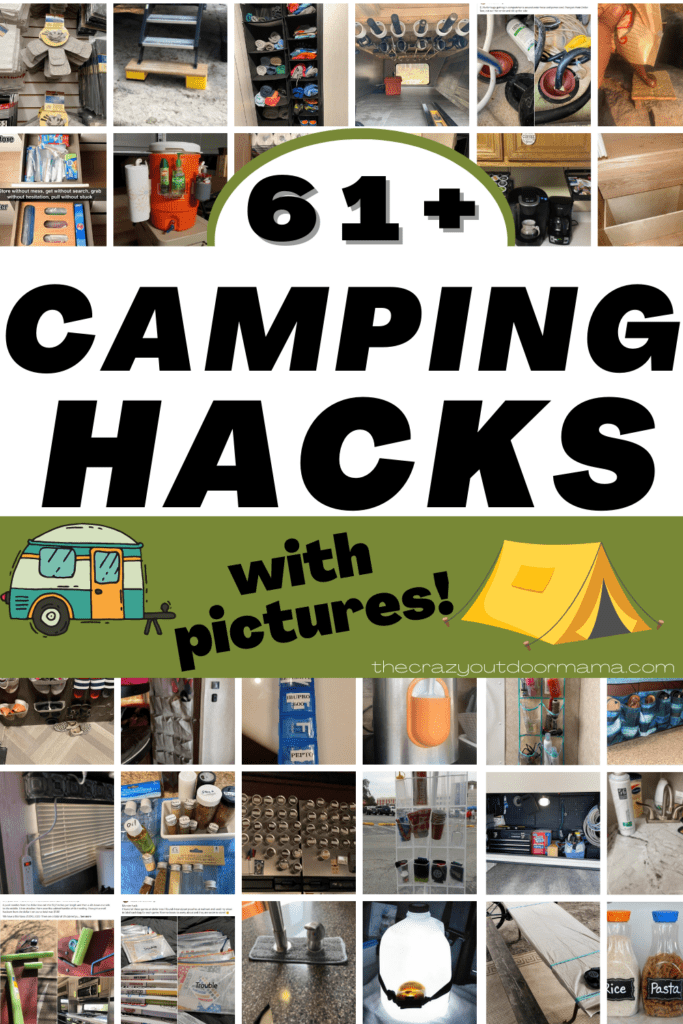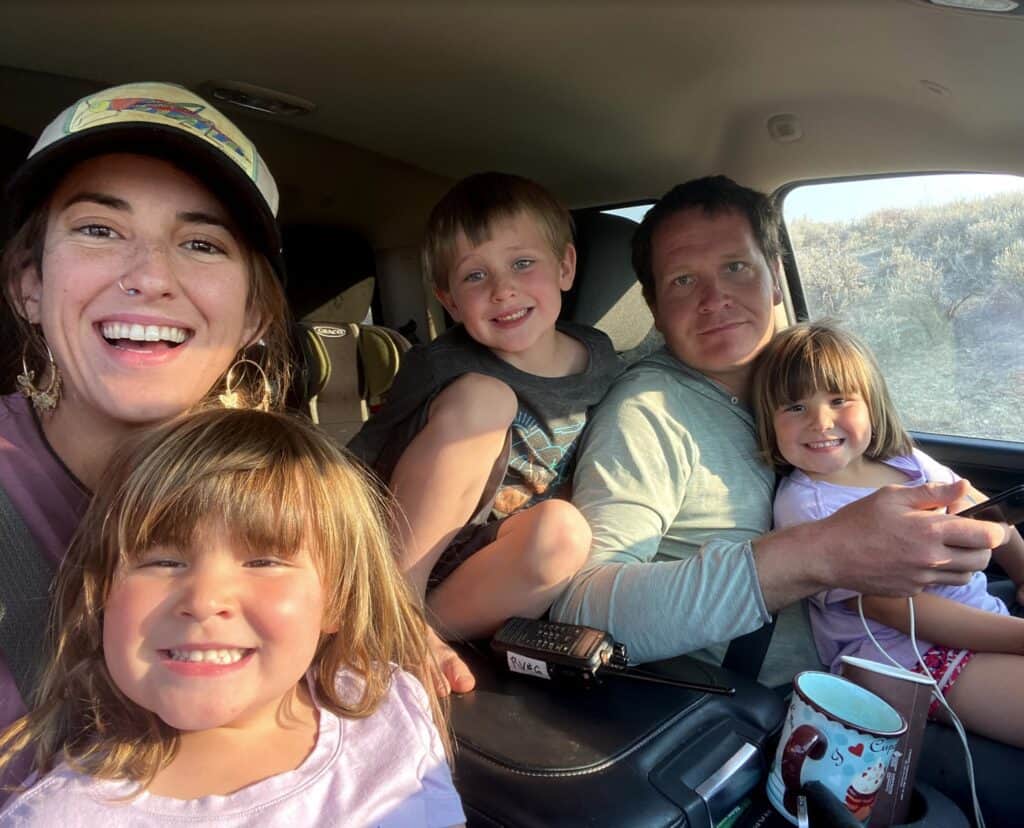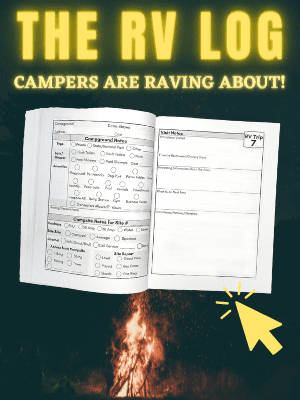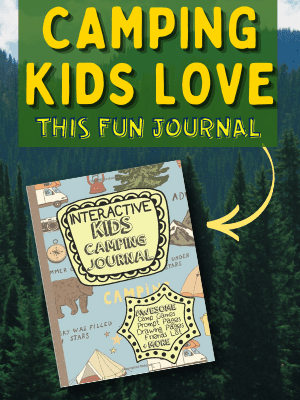Think you’ve got the outdoor skills to survive your first backpacking trip just because you’ve seen every episode of Running Wild With Bear Grylls?
Think again.
Sure, you don’t need to know how to skin a snake with a stick or make elephant dung casserole, but you do need a few basic backpacker survival skills that’ll help you stay alive and find help in case of an emergency.

So let’s have a look at some outdoor skills every hiker needs to have. Fortunately, they don’t involve eating bugs or other gross stuff, but are focused on taking care of your basic needs for a few short days until you can find help.
Let’s get started with 3 of the most basic wilderness skills you NEED as a new backpacker!
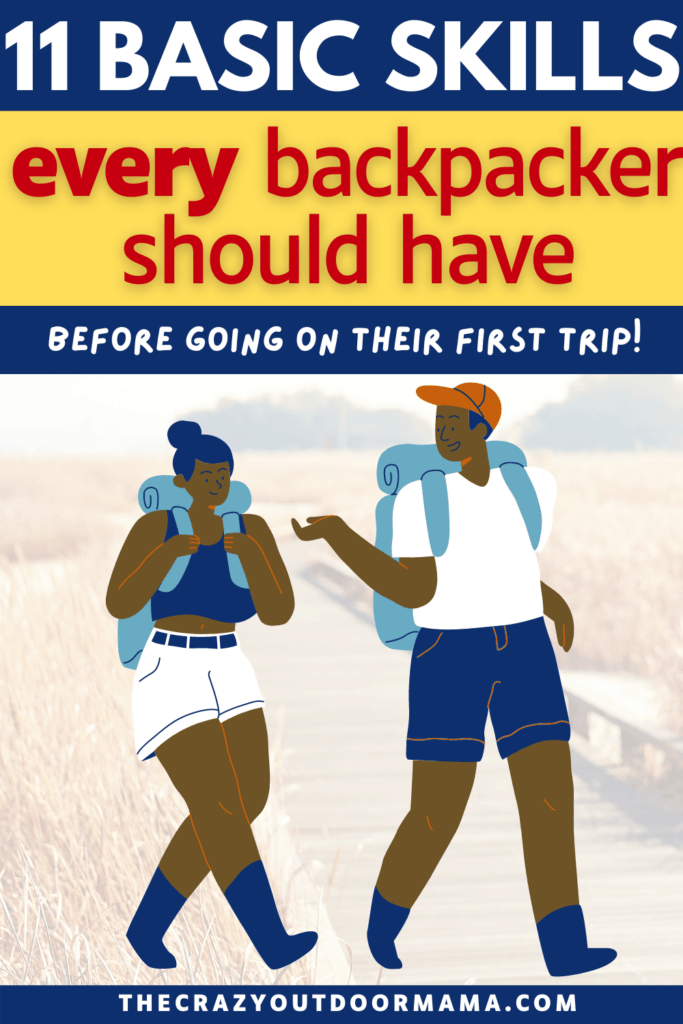
Table of Contents
3 Basic Survival Skills Every Backpacker Needs
Every human, whether you’re deep in the backcountry or stuck at home in the suburbs, needs just a few basic things to survive.
I’m sure you’ve mastered basic survival skills at home (turning up the thermostat when you’re cold, heading to Subway when you’re hungry, and opening a bottle of diet Pepsi when you’re feeling a little parched), but let’s see how to do the equivalent when you’re in the wilderness.
Survival Skill #1 – Make Fire

On your backpacking gear checklist, you’ve no doubt got a lighter and matches. Now you’re at your campsite with a bunch of green wood. What’cha gonna do?
Here are some campfire basics.
1. Prep the area
Clear the area around where you plan to build the fire. Make sure it’s free of any combustible materials that could cause the fire to spread. (Always check local burning regulations before starting a fire.)
Make sure there are no low-hanging branches above the area where you’ll be lighting your fire. Then dig a shallow hole in the ground or make a small fire ring with some rocks. This will help contain the fire.
2. Prepare your fuel
Before even lighting a match you need to have a few things ready…
Tinder – Don’t open up your dating app just yet. We’re talking light, dry, fast-burning fuel that catches fire almost immediately. This could include things like…
-Pine needles
-Dried leaves
-Shredded bark
-The electric bill you don’t want to pay
Kindling – This is a little more substantial. Think small twigs, sticks, branches… basically anything that’s dry and the size of a toothpick to finger-width.
*The wetter the fuel wood is, the more kindling you’ll need.
Fuel Wood – Now you need some larger pieces of wood that’ll keep the fire going. Look for fallen trees and dead branches since they’ll be drier and ready to burn.
Start by placing your kindling in a small pile. Add small pieces of kindling on top and light it up! As the kindling starts to burn, add larger kindling, gradually working up to larger pieces of wood.
*Tip – Make sure not to add larger pieces too fast and always allow space for air to circulate.
Practice with a flint and steel. Lighters break and matches get wet. That’s why it’s always a good idea to have a flint and steel stashed in your backpack as a backup. Although starting a fire with flint and steel is a little harder than with a lighter, the basic principles are the same.
Here’s a great video that explains more about using flint and steel to start a fire.
And if you’re really serious about your wilderness survival skills, here’s one that shows how to use a bow drill to start a fire.
Survival Skill #2 – Find Water
Since you can’t survive more than a few days without water, collecting clean water you can actually drink is one of the most critical outdoor skills for hikers. All it takes is a spilled water container or broken water purifier to turn a fun hiking trip into a fight to stay alive.
So what should you do if you suddenly find yourself without any drinking water?
1. Plan ahead
Even if you’ve packed a water purifier for backpacking, it’s always good to have a backup way to purify water, like a few water purification tablets. Check out my post with a bunch of options for purifying water while backpacking.
2. Collect water
While it is possible to purify the water you’ve collected from a stagnant water source, your best bet is to look for a clear running stream.
3. Initial filtration
While not always necessary, you can filter out any debris and some sediments by pouring the water through a piece of cloth. You can also let it sit until some of the sediments settle to the bottom. Then, carefully pour the clear water into another recipient.
4. Purification
If you don’t have another way to remove or kill bacteria, viruses, etc. either chemically or with a purifier, you need to boil the water to kill any of that nasty stuff.
What if I don’t have a camp stove? Refer to survival skill #1. Make a fire.
What if a bear took my backpack and I don’t have a pot to boil my water in? Make a burn bowl and boil water with hot rocks. Pretty cool right?! It’s actually not too difficult. Here’s a video that shows you how to do it.
What if I can’t find any running water? Although it’s likely to have more bacteria, you can collect standing water. Look for places where rain has collected. Even if you find a place that doesn’t have water on the surface, if rain has collected there recently you can usually dig down a few inches and water will collect in the bottom of the hole.
What if everything around me is frozen? Gather some snow and melt it over the fire. You can also put some snow in a container and place it in between layers of your clothing or next to you in your shelter. Just make sure it’s not right next to your skin so it doesn’t make it harder for you to stay warm.
If you’re really desperate, first thing in the morning take a piece of cloth and wipe down dew-covered leaves or grass and then squeeze the collected dew into a container.
So you can make fire, find and purify water with that fire, now what? You need to find your way back to civilization and the nearest Starbucks.
Survival Skill #3 – Navigate Without Google Maps
Imagine this. You try to make a running leap over a stream, your phone falls out of your pocket only to break into a million pieces, and now you don’t have GPS, your favorite map app, or Instagram. What do you do?
Even if you have your phone or another GPS device to rely on, you ALWAYS need to pack a backup map. Batteries die, phones break, and bad weather or geographic features can make GPS unreliable.
So always make sure to pack a map and a compass. It’s also important to get a general idea of the main landmarks and features of the area you’ll be hiking in.
But having a map and compass won’t do you much good if you don’t know how to use them. Learn basic backcountry compass and map reading skills with this video.
*Tip – In a really desperate situation where you have no idea where you are or how to find civilization, use the old survival rule of following water downstream. Small streams lead to bigger streams, which lead to rivers and eventually towns, people, and fast-food restaurants!
Those are the big three. If you can make fire, find drinking water, and do basic wilderness navigation, you can survive most sticky situations you might encounter on short hiking trips.
But what if you plan on venturing farther into the wild on longer treks? Here are a few more skills that you should definitely pick up.
7 More Backpacking Survival Skills
In addition to the basics we covered above, consider learning to…
*I’ve made it easy for you to learn each of these outdoor skills. Just click on the accompanying video and voila!!! -Handpicked instructional videos.
Build Shelter
No, you don’t need to know how to build a log cabin. But if something happens to your tent and you have to spend a night (or several nights) in the wild, you’ll need a shelter that’ll provide some protection from the cold and wind, a roof to help you stay dry, and a bit of security from curious critters.
Check out these 5 cool survival shelters. One even has floor heat! I bet your fancy tent doesn’t have that!
Signal for Help
Learn ways to make yourself visible or send messages from a distance. These could involve learning how to signal with a mirror, whistle, or fire, and even how to leave clues or messages that can help rescuers find you.
Want to learn the basic ways to signal for help? Check out this video.
Find North Without a Compass
No, moss doesn’t always grow on the north side of a tree so you can’t rely on that. But you can learn how to use the sun, moon, and even shadows to get your bearings.
Learn how to use the sun and a few sticks to find north.
Perform Basic Wilderness First Aid
Knowing some simple first aid procedures can save your life or the life of a fellow hiker. Learn how to make a natural first aid bandage and what types of plants work as antisceptics and pain relievers. This can also include what to do in emergency situations like if you fall and break a bone or burn yourself while trying to make s’mores.
Click here to learn basic emergency first aid skills for backpacking.
Find Food
If you’re lost for more than a day or two, you’re gonna need to find some food. Learn about wild edibles, bugs you can eat, or even how to make simple traps and fishing equipment.
Check out this useful video to learn about the 5 most common wild edibles in temperate regions you can use for food.
Make and Use Rope
This really comes in handy when you need rope or line to build tools, traps, and shelters in the wild.
Here’s a cool way to make rope from natural materials.
And here are six useful knots that’ll come in handy while hiking.
Stay Safe When You Encounter Animals
What do you do when you suddenly look up and see Smokey the Bear’s ugly cousin 30 feet away and staring right at you? Learn how to react if you encounter bears, mountain lions, bobcats, moose, and other critters that may not be so friendly.
Learn what to do with quite possibly the FUNNIEST VIDEO EVER MADE about how to survive a bear attack.
The Most Important Backpacking Survival Skill of Them All Is…
Be Prepared
Whether it’s a backup pack of waterproof matches, an extra map, a few water purification tablets, or a can of bear spray, simply thinking ahead and being well-prepared with basic survival gear can keep an uncomfortable situation from turning into a dangerous emergency situation.
So don’t forget to plan well for both the gear you pack and the survival skills you need to learn before heading out on your first backpacking trip.
Want some more tips for planning and surviving your overnight hiking trips? Check out my other articles for backpackers.
Plan your first backpacking trip
How to pack your backpacking kitchen
How can backpackers purify water while on a hike?
Expert tips for packing your backpack
Some of the best places for your first backpacking trips
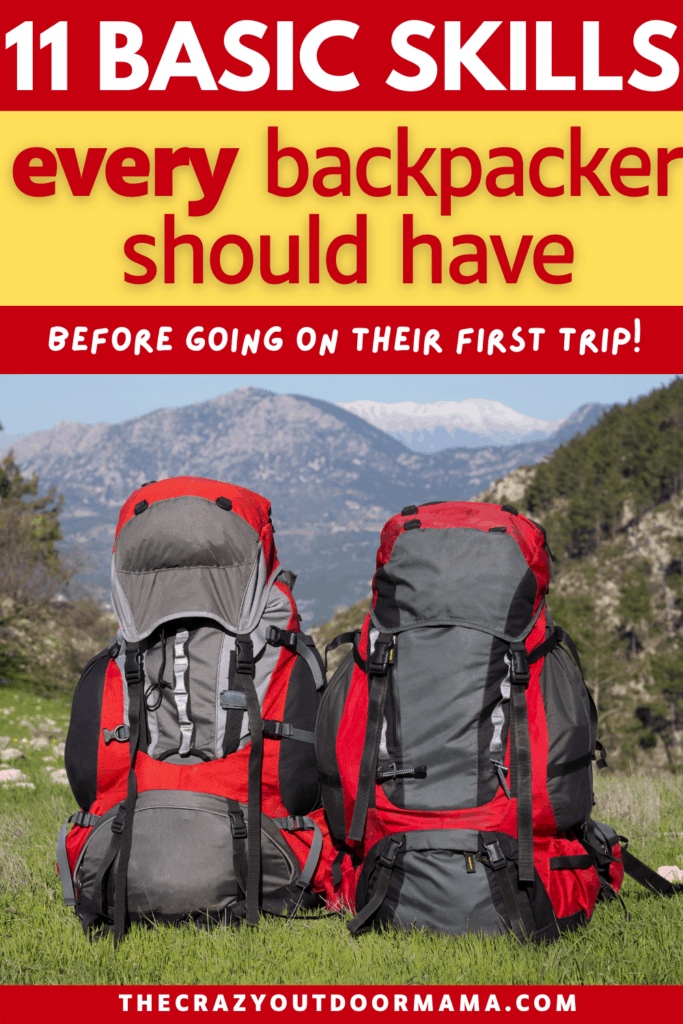
- Solar Eclipse 2024 Kids Printable Activity Pack! - April 8, 2024
- 11 RV Bathroom Makeovers to Inspire You! - April 7, 2024
- 13 Dreamy Hammock Camping Set Up Ideas + Pics - February 22, 2024
